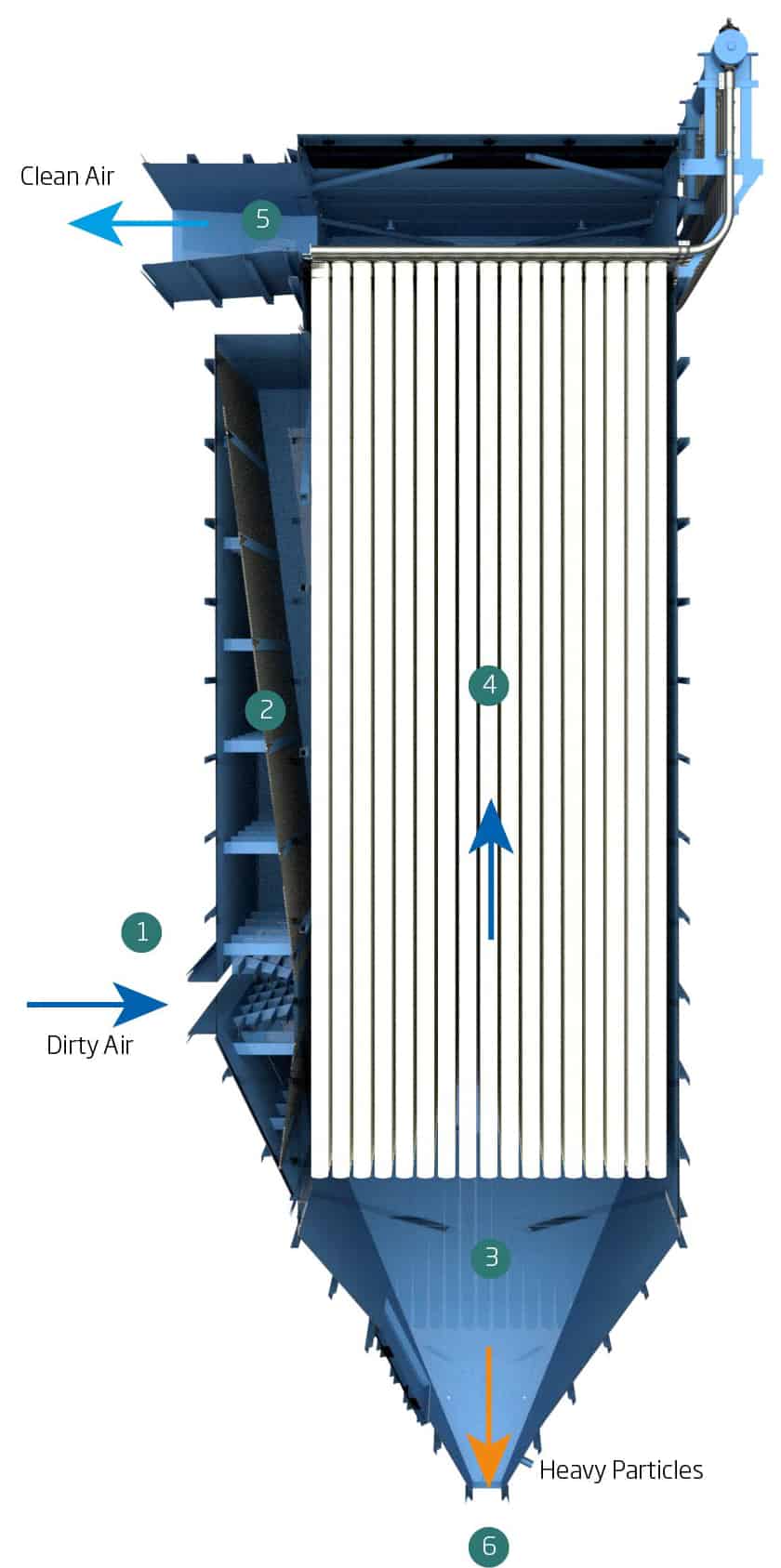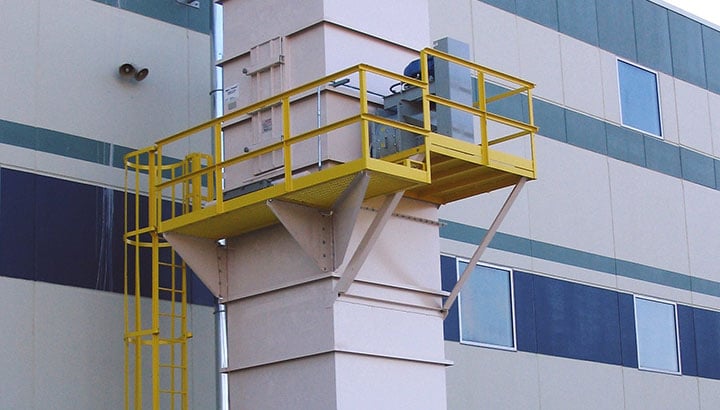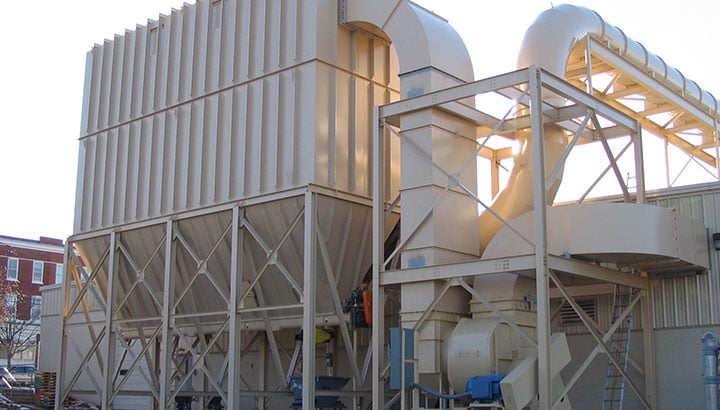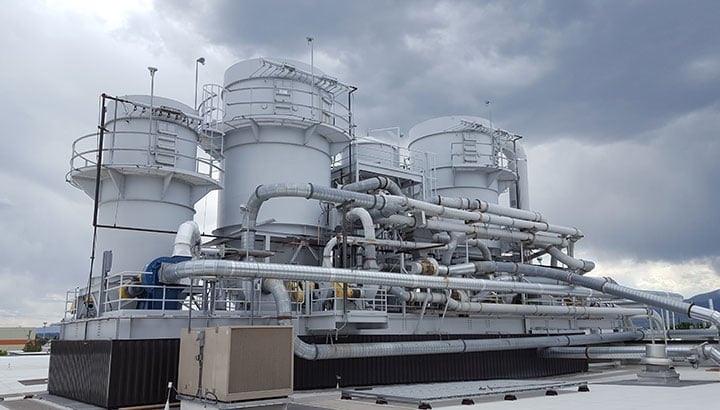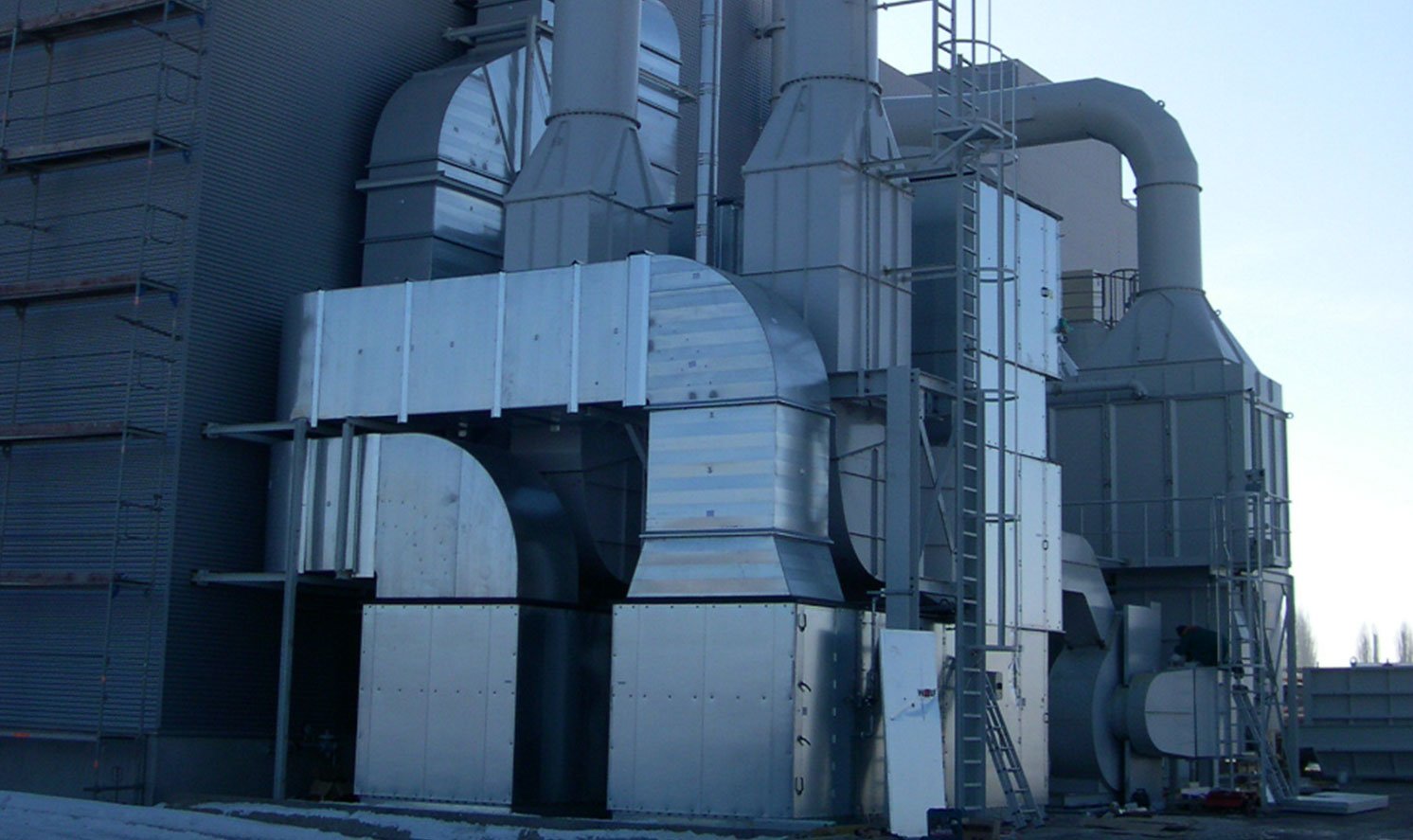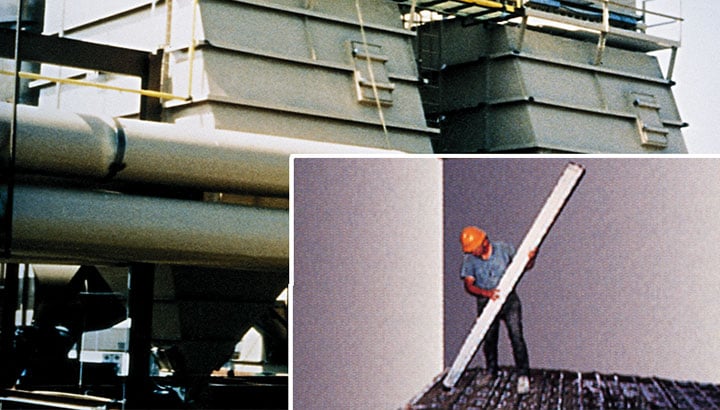

- Home
- Products
- Baghouse Dust Collectors
Pulse Jet Collectors
Pulse Jet Collectors
Pulse jet baghouse dust collectors are used when it is impractical to shut down your dust collector to clean the bags. A pulse of compressed air is blasted through the bags to blow loose the built up particles on the bags to maintain optimum filtration efficiency.
How does a pulse-jet dust collector work?
Filtering - normal operation
- Dusty air enters pre-sep horizontally
- Decelerates, separates heavier coarse particles, turns toward bags (bags shielded from direct abrasion)
- Heavy coarse dust falls down directly into hopper
- Air passes through bag material and dust retained on bag surface
- Filtered air blown out by fan
- Dust finally is being removed by discharge device
A pulse jet dust collector is a dry filtration system that incorporates an integral media cleaning system. It might be called a pulse-jet collector, a pulse-jet filter or a pulse-jet fabric filter. The media is usually a tubular shaped vertical bag of varying diameter and length. It’s also common to see pleated bags and “flat” bags mounted horizontally. Many bags are arranged inside a housing and particulate matter accumulates on the outside of the bags.
The cleaning system removes particulate that has accumulated into a “cake” onto the bags by blowing high pressure compressed air into the inside of the bag. Nederman MikroPul is proud to be the home of the original Pulse-jet cleaning patent, granted in 1957.
Pulse jet bag filters are a common type of dry air pollution control equipment found in industrial plants and play a critical role in the protection of workers, the general environment and also to collect valuable material for refining or re-use.
Automated cleaning control systems have become common to regulate the pulse of compressed air that the bags receive. Cleaning strategy and correct operation of the cleaning system yields improvements in the use of compressed air and therefore energy use. Bag life has been shown to improve through good maintenance practices in pulse-jet dust collectors.
What are some of the benefits of pulse-jet dust collectors?
- The technology can be applied across many different gas or dust types
- The mechanisms are relatively simple to install and maintain
- This system has become accepted practice across many industries, bringing familiarity
- Pollution control is very good and can be further enhanced by design
What are some constraints for using pulse-jet dust collectors and filters?
- There must be a reliable compressed air source
- Sizing of systems for airflow should be precisely calculated and re-assessed as process conditions change
- Regular maintenance of the bags and cleaning system enhance lifecycle performance
- Care taken to manage inlet air flow and temperature increases asset life
